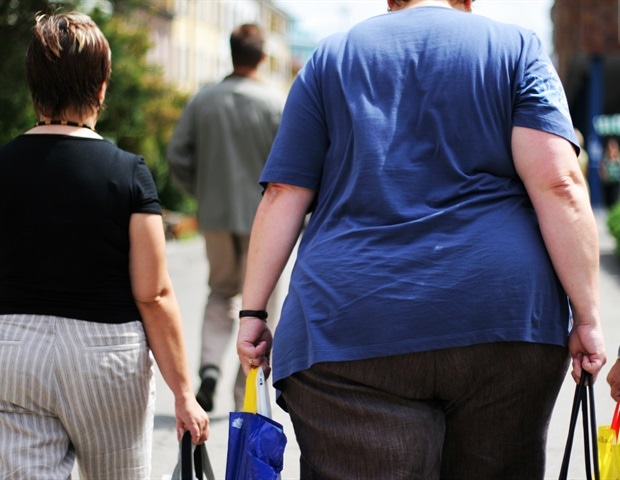Community Baby Shower Fund returns to support high-risk maternal health neighborhoods – Brooklyn Paper

Report on the Second Annual Community Baby Shower Fund Initiative in Brooklyn
Introduction
On July 28, Brooklyn Borough President Antonio Reynoso announced the launch of the second annual Community Baby Shower Fund. This initiative, building on a successful inaugural year, allocates $50,000 to support new and expecting parents. The program is a key component of the Borough President’s broader strategy to address maternal health inequities and directly aligns with several United Nations Sustainable Development Goals (SDGs), including those focused on health, equality, and community partnerships.
Initiative Overview and Strategic Objectives
Funding and Scope
The fund is designed to empower local organizations to provide direct support to families. Key parameters of the program include:
- A total of $50,000 in available funding.
- Awards of up to $5,000 in matching funds for ten selected Brooklyn-based non-profit organizations.
- Funds are designated for community baby showers held before May 31, 2026.
- Supported activities include educational workshops, the provision of essential items such as diapers and baby blankets, and connecting families with local health and support resources.
Core Mission: Addressing Health Disparities
The primary objective of the initiative is to combat the significant maternal health disparities observed in Black and Brown communities. These communities continue to experience disproportionately high rates of maternal mortality and morbidity. The community baby showers serve as a platform for celebration, resource distribution, and community-building in historically underserved areas.
Alignment with Sustainable Development Goals (SDGs)
SDG 3: Good Health and Well-being
The Community Baby Shower Fund is fundamentally aligned with SDG 3, which aims to ensure healthy lives and promote well-being for all at all ages. The initiative contributes directly to:
- Target 3.1: By 2030, reduce the global maternal mortality ratio. The fund’s focus on providing resources and support in high-risk communities is a direct local action toward this global target.
- Target 3.8: Achieve universal health coverage, including access to quality essential health-care services. The events connect attendees with local healthcare resources, improving access and health literacy.
This initiative is part of a larger commitment, including a $45 million allocation to enhance maternal healthcare at Brooklyn’s public hospitals and the creation of an Advanced Certificate in Perinatal Mental Health with Brooklyn College, further supporting maternal well-being.
SDG 10: Reduced Inequalities
The program is a targeted intervention designed to advance SDG 10 by reducing inequalities within and among communities. It specifically addresses Target 10.2: to empower and promote the social, economic, and political inclusion of all, irrespective of race or economic status. This is achieved by:
- Prioritizing funding for organizations operating in neighborhoods with historically high rates of maternal mortality and morbidity, such as Bedford-Stuyvesant, Brownsville, and Sunset Park.
- Ensuring that resources are channeled directly to Black, Brown, and low-income communities that have been systematically underserved.
SDG 1 & SDG 5: No Poverty and Gender Equality
The initiative also contributes to SDG 1 (No Poverty) and SDG 5 (Gender Equality). By providing essential supplies, the fund helps alleviate the financial burden on new parents, a key aspect of social protection systems under Target 1.3. Furthermore, by empowering mothers with health education, resources, and a strong community support system, the program enhances their well-being and agency, contributing to the broader goals of gender equality.
SDG 17: Partnerships for the Goals
The success of the Community Baby Shower Fund exemplifies the multi-stakeholder approach advocated for in SDG 17. The initiative is a collaborative effort involving:
- The Brooklyn Borough President’s Office (public sector).
- Local 501(c)(3) non-profits (civil society).
- NYC Health + Hospitals (public health system).
- Brooklyn College (academia).
- The Maternal Health Task Force, co-chaired by the President of New York State Midwives.
This partnership model is critical for creating sustainable and impactful solutions to complex social challenges like maternal health inequity.
Implementation and Eligibility
Applicant Qualifications
To be eligible for funding, organizations must meet the following criteria:
- Hold current 501(c)(3) status.
- Provide documentation of matching funds equal to the amount requested.
- Demonstrate a history of serving prenatal and postnatal individuals and their families.
- Possess experience in organizing community baby showers or similar resource-focused events.
Application Process
Applications are being accepted on a rolling basis until all funds are disbursed. The funding is issued on a reimbursement basis after the event has occurred. Submission of an application does not guarantee an award. Interested organizations can apply via the official request form on the Brooklyn Borough Hall website.
SDGs Addressed in the Article
The article highlights several issues that are directly connected to the United Nations Sustainable Development Goals (SDGs). The primary focus on maternal health, racial disparities, community support, and healthcare access links the initiative to the following SDGs:
- SDG 3: Good Health and Well-being: The core of the article is about improving maternal health outcomes and reducing mortality rates.
- SDG 10: Reduced Inequalities: The initiative explicitly aims to address the “stark maternal health disparities in Black and Brown communities.”
- SDG 17: Partnerships for the Goals: The project is a collaboration between the government (Borough President’s office), non-profits, public hospitals, and academic institutions.
- SDG 1: No Poverty: The program provides essential goods to families in “low-income communities,” addressing a dimension of poverty.
- SDG 4: Quality Education: The initiative includes educational components such as workshops and public campaigns to inform parents.
Specific SDG Targets Identified
Based on the article’s content, several specific targets under the identified SDGs can be pinpointed:
SDG 3: Good Health and Well-being
- Target 3.1: “By 2030, reduce the global maternal mortality ratio…” The article’s central theme is the effort to combat “disproportionately high maternal mortality and morbidity rates,” which directly aligns with this target.
- Target 3.8: “Achieve universal health coverage, including… access to quality essential health-care services…” The initiative connects attendees with “local resources” and aims to “offer access to healthcare resources,” supporting the goal of universal health access, particularly for underserved communities.
SDG 10: Reduced Inequalities
- Target 10.2: “By 2030, empower and promote the social, economic and political inclusion of all, irrespective of… race, ethnicity…” The article states that the initiative addresses “maternal health disparities in Black and Brown communities” and gives priority to neighborhoods “historically impacted by high maternal mortality and morbidity rates,” directly targeting inequality of outcome based on race and location.
SDG 17: Partnerships for the Goals
- Target 17.17: “Encourage and promote effective public, public-private and civil society partnerships…” The article details a multi-stakeholder partnership involving the Brooklyn Borough President, “ten Brooklyn nonprofits,” “Brooklyn’s three public hospitals,” and “Brooklyn College,” which exemplifies this target.
SDG 1: No Poverty
- Target 1.4: “By 2030, ensure that all men and women, in particular the poor and the vulnerable, have… access to basic services…” The program provides “essentials like diapers and baby blankets” to families, many of whom are in “low-income communities,” thereby improving their access to basic goods.
SDG 4: Quality Education
- Target 4.7: “By 2030, ensure that all learners acquire the knowledge and skills needed to promote sustainable development…” The initiative includes “workshops,” a “‘Healthy Pregnancy’ public education campaign,” and the creation of an “Advanced Certificate in Perinatal Mental Health” to provide crucial health knowledge to parents and professionals.
Indicators for Measuring Progress
The article mentions or implies several indicators that can be used to measure progress towards the identified targets:
SDG 3: Good Health and Well-being
- Indicator for Target 3.1: The article directly refers to “maternal mortality and morbidity rates.” Therefore, the Maternal mortality ratio (Indicator 3.1.1) is the key metric for measuring the initiative’s ultimate success.
- Indicator for Target 3.8: The program aims to “connect attendees with local resources.” An implied indicator is the number of parents connected to healthcare services and resources through the community baby showers.
SDG 10: Reduced Inequalities
- Indicator for Target 10.2: The focus is on reducing disparities. Progress can be measured by tracking the maternal mortality and morbidity rates disaggregated by race, ethnicity, and geographic neighborhood (e.g., Brownsville, Sunset Park) to see if the gap is closing.
SDG 17: Partnerships for the Goals
- Indicator for Target 17.17: The article provides concrete numbers related to the partnership. Indicators include the amount of funding mobilized (“$50,000 Community Baby Shower Fund,” “$45 million to maternal healthcare improvements”) and the number of participating organizations (“Ten Brooklyn nonprofits,” public hospitals, a college).
SDG 1: No Poverty
- Indicator for Target 1.4: The article states the fund “served hundreds of new and expecting parents” and provides “essentials like diapers and baby blankets.” A direct indicator is the number of families/parents receiving essential supplies.
SDG 4: Quality Education
- Indicator for Target 4.7: The initiative includes educational activities. Progress can be measured by the number of individuals attending educational workshops and the reach of the “public education campaign.”
Summary of Findings
| SDGs | Targets | Indicators |
|---|---|---|
| SDG 3: Good Health and Well-being | 3.1: Reduce the global maternal mortality ratio. 3.8: Achieve universal health coverage and access to quality essential health-care services. |
– Maternal mortality and morbidity rates. – Number of parents connected to healthcare services. |
| SDG 10: Reduced Inequalities | 10.2: Empower and promote the social, economic, and political inclusion of all, irrespective of race or ethnicity. | – Maternal mortality/morbidity rates disaggregated by race and neighborhood to measure the reduction in disparities. |
| SDG 17: Partnerships for the Goals | 17.17: Encourage and promote effective public, public-private, and civil society partnerships. | – Amount of funding mobilized through partnerships (e.g., $50,000 fund, $45 million investment). – Number of partner organizations involved. |
| SDG 1: No Poverty | 1.4: Ensure access to basic services and resources for the poor and vulnerable. | – Number of families receiving essential supplies (diapers, blankets). |
| SDG 4: Quality Education | 4.7: Ensure all learners acquire knowledge and skills needed for sustainable development, including health and well-being. | – Number of participants in health education workshops and campaigns. |
Source: brooklynpaper.com

What is Your Reaction?
 Like
0
Like
0
 Dislike
0
Dislike
0
 Love
0
Love
0
 Funny
0
Funny
0
 Angry
0
Angry
0
 Sad
0
Sad
0
 Wow
0
Wow
0












































































